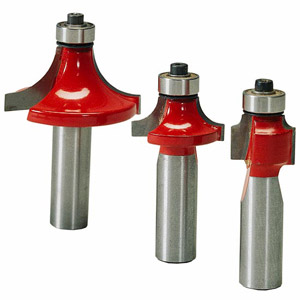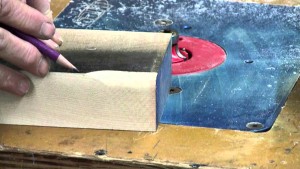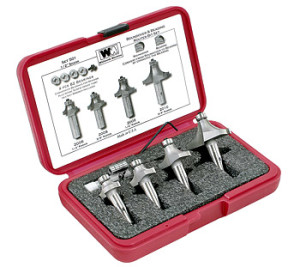Roundover Bits- 101
Roundover Bits
Roundover bits are used for outer edge shaping, moldings, picture frames, etc. These bits typically include a bearing and are not suitable for plunging directly into the surface of a panel. Rounding an edge makes your work more durable & appealing to the eye because it won’t show dents, splinter, or lose its finish as easily as a sharp corner.
Radius
Roundover bits are generally classified according to the radius they cut. For example, a 3/4″ roundover bit cuts a 3/4″ radius. To determine the radius of a roundover bit, measure either of the dimensions shown in the picture.
Roundover Bit Set-Up
After mounting a roundover bit in a router, adjust the bit up or down so the bottom of the concave cutting edge aligns flush with the router base or the surface of the router table. You can use a flat block of wood to check your adjustment.
Before cutting your stock, test the cut on scrap piece. If the bit extends too far, it will cut a slight ridge into the work piece surface, called a fillet. If the bit does not extend far enough, it will cut an incomplete radius.
How to add a fillet
By extending the bit slightly, you can cut a round-over with a fillet like the one shown in the picture.
Change the Bearing to Make a Beading Bit
You don’t have to buy beading bits, save $$$ by purchasing different sized bearings for the same results! To change bearings, simply loosen the set-screw on the bearing with a hex key.
Buying Roundover bits
Roundover bits can be purchased individually or in sets. The sets vary in profiles; you can purchase a set that includes straight, rabbeting, cove, up-cut spiral as well as sets that have only roundover bits. Some of our Whiteside roundover sets even include the bearings needed for beading profiles. .
Leave a Reply









